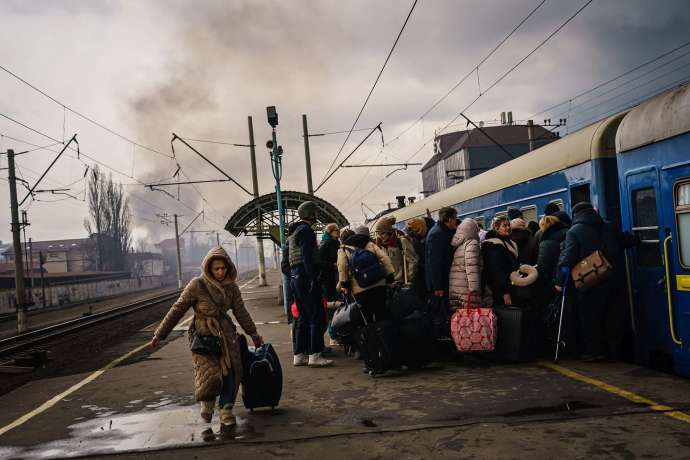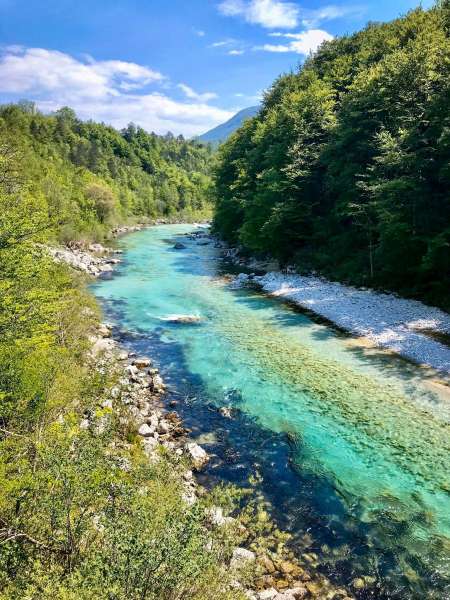Časoris is an online newspaper aimed at children. Each week we’ll take an article and post it here as a Slovene-English dual text.
Kako premagovati strah zaradi vojne?
How to overcome the fear of war?
Written by Sandra Hanžič, translated by JL Flanner & G Translate
Vojni v Ukrajini žal ni videti konca. Vsak dan spremljamo podobe, ki v nas vzbujajo strah.
Unfortunately, the war in Ukraine does not seem to be over. Every day we follow images that arouse fear in us.
Vedeti moramo, da so prestrašeni ljudje bolj vodljivi. Prav tako jih je lažje zavajati kot tiste, ki strah prepoznavajo in se soočajo z njim.
We need to know that scared people are easier to manage. They are also easier to deceive than those who recognize fear and face it.
Obenem prestrašeni ljudje težje zavzemajo kritično držo in se aktivno soočajo s problemi.
At the same time, frightened people find it harder to take a critical stance and actively face problems.
Strah je zelo pomembno čustvo, ki ga ne smemo zanikati, opozarja psihoterapevtka Alja Adam iz Slovenske krovne zveze za psihoterapijo.
Fear is a very important emotion that should not be denied, warns psychotherapist Alja Adam from the Slovenian Umbrella Association for Psychotherapy.
Kako se otroci soočajo s strahom?
How do children cope with fear?
Otroci najbolj trpijo, ko so sami s svojimi strahovi in tesnobami in ko odrasli nimajo časa, volje, sočutja, da bi jim prisluhnili. Strah, ki ga osamimo, postaja vse večji in duši ustvarjalno energijo.
Children suffer the most when they are alone with their fears and anxieties, and when adults do not have the time, will, compassion to listen to them. The fear we isolate is growing and suffocating the creative energy.
Njegovo nasprotje je ljubezen, ki se rojeva v pristnem dialogu, v nežnem objemu, toplem stisku rok.
The opposite is love, born in genuine dialogue, in a gentle embrace, a warm handshake.
Otroke je treba učiti, kako z ljubeznijo pogledati svoj strah, ga ne zanikati, temveč se soočiti z njim.
Children need to be taught how to look at their fear with love, not to deny it, but to face it.
Kaj lahko storimo, da ublažimo otroške stiske?
What can we do to alleviate children's distress?
Otrokom ne smemo tajiti, kaj se dogaja v Ukrajini. Hkrati jih niti ne smemo strašiti, kot to pogosto počnejo mediji.
We must not hide what is happening in Ukraine from children. At the same time, we must not intimidate them, as the media often does.
Pomembno je, da odrasli, zaradi lastnega strahu in travm, ne odrinemo otrok na stran in da ne pozabimo nanje.
It is important that adults, out of their own fear and trauma, do not push children aside and do not forget about them.
Če otrokom omogočimo, da z nami aktivno sodelujejo v težkih situacijah, bodo razvili pozitivno samopodobo in sočutje ter krepili svojo duhovno naravnanost.
If we enable children to actively cooperate with us in difficult situations, they will develop a positive self-image and compassion, and strengthen their spiritual orientation.
Kaj pomeni aktivno sodelovanje?
What does active participation mean?
Sodelujejo lahko pri dobrodelnih akcijah, na primer zbirajo sredstva za ukrajinske otroke, pripravijo idejo projekta v podporo beguncem, napišejo pismo s svojimi mislimi ali dobrimi željami.
They can take part in charity events, for example, raise funds for Ukrainian children, come up with a project idea in support of refugees, write a letter with their thoughts or good wishes.
Pomembno je, da se otroci zavedajo, da pripadajo širši celoti, skupnosti. Da so njihova misel, gesta, beseda dobrodošle in pomembne, saj odpirajo prostor ljubezni in sočutju.
It is important that children are aware they belong to a wider whole, a community. That their thoughts, gestures, words are welcome and important as they open up a space of love and compassion.
Read more stories and improve your Slovene at Časoris, while all our dual texts can be found here.







